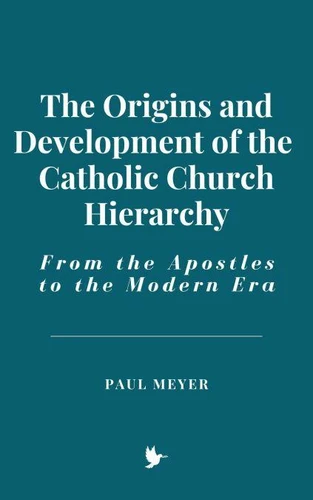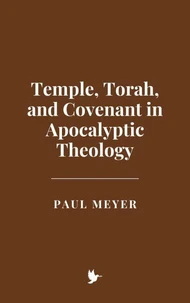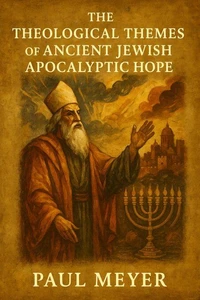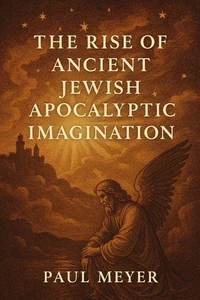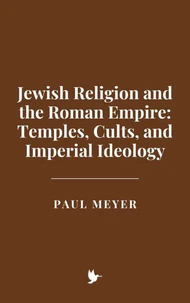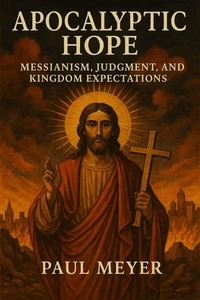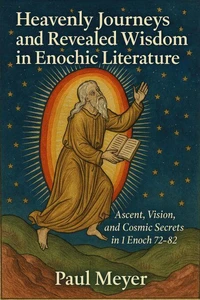The Origins and Development of the Catholic Church Hierarchy: From the Apostles to the Modern Era
Par :Formats :
Disponible dans votre compte client Decitre ou Furet du Nord dès validation de votre commande. Le format ePub est :
- Compatible avec une lecture sur My Vivlio (smartphone, tablette, ordinateur)
- Compatible avec une lecture sur liseuses Vivlio
- Pour les liseuses autres que Vivlio, vous devez utiliser le logiciel Adobe Digital Edition. Non compatible avec la lecture sur les liseuses Kindle, Remarkable et Sony
 , qui est-ce ?
, qui est-ce ?Notre partenaire de plateforme de lecture numérique où vous retrouverez l'ensemble de vos ebooks gratuitement
Pour en savoir plus sur nos ebooks, consultez notre aide en ligne ici
- FormatePub
- ISBN8227379320
- EAN9798227379320
- Date de parution12/10/2024
- Protection num.pas de protection
- Infos supplémentairesepub
- ÉditeurBig Dog Books, LLC
Résumé
This book provides an in-depth exploration of the Catholic Church's hierarchical structure, tracing its evolution from its earliest foundations in Scripture and the Apostolic era to its contemporary challenges and future outlook. It examines the theological, historical, and sociopolitical factors that have shaped the Church's hierarchy over nearly two millennia, emphasizing its role in maintaining doctrinal unity, governing the faithful, and adapting to changing circumstances. Beginning with the biblical roots of Church governance, the book explores the development of the threefold ministry of bishops, priests, and deacons, highlighting the key contributions of figures such as Clement of Rome, Ignatius of Antioch, and St.
Irenaeus in establishing the early Church's hierarchical structure. The rise of episcopal authority, the emergence of metropolitan bishops, and the growing influence of the papacy during late antiquity are examined in light of key historical events such as the Council of Nicaea and the fall of the Roman Empire. As the Church expanded during the Middle Ages, the hierarchical structure became increasingly centralized, with the papacy asserting its authority over both spiritual and temporal matters.
The Gregorian Reforms, the rise of religious orders, and the impact of the Great Schism are explored as turning points that shaped the medieval Church's governance and its relationship with both secular rulers and the Eastern Orthodox Church. The book also analyzes the profound changes brought by the Renaissance and the Reformation, focusing on the challenges posed to the Church's hierarchy by humanism, the Protestant Reformation, and the Catholic Counter-Reformation.
The Council of Trent and the reforms initiated during this period are presented as crucial moments in the defense and renewal of the Church's structure. In the modern era, the book explores the impact of the Enlightenment, the French Revolution, and the rise of nationalism on the Church's governance. The decline of the Church's temporal power and the rise of papal infallibility during the First Vatican Council are discussed, alongside the Church's adaptation to the challenges of modernity and secularism. The Second Vatican Council is presented as a watershed moment for the Church's hierarchy, with its emphasis on collegiality, synodality, and the role of the laity.
The post-Vatican II period is analyzed in light of ongoing challenges, including the sexual abuse crisis, the role of women, and the rise of synodal governance under Pope Francis. This comprehensive study concludes by addressing the future of the Catholic Church's hierarchy, focusing on the balance between maintaining traditional structures and adapting to contemporary demands for greater accountability, inclusion, and decentralization.
It reflects on the enduring significance of the hierarchy as both a guardian of the faith and a dynamic structure that continues to evolve in response to the needs of the Church and the world.
Irenaeus in establishing the early Church's hierarchical structure. The rise of episcopal authority, the emergence of metropolitan bishops, and the growing influence of the papacy during late antiquity are examined in light of key historical events such as the Council of Nicaea and the fall of the Roman Empire. As the Church expanded during the Middle Ages, the hierarchical structure became increasingly centralized, with the papacy asserting its authority over both spiritual and temporal matters.
The Gregorian Reforms, the rise of religious orders, and the impact of the Great Schism are explored as turning points that shaped the medieval Church's governance and its relationship with both secular rulers and the Eastern Orthodox Church. The book also analyzes the profound changes brought by the Renaissance and the Reformation, focusing on the challenges posed to the Church's hierarchy by humanism, the Protestant Reformation, and the Catholic Counter-Reformation.
The Council of Trent and the reforms initiated during this period are presented as crucial moments in the defense and renewal of the Church's structure. In the modern era, the book explores the impact of the Enlightenment, the French Revolution, and the rise of nationalism on the Church's governance. The decline of the Church's temporal power and the rise of papal infallibility during the First Vatican Council are discussed, alongside the Church's adaptation to the challenges of modernity and secularism. The Second Vatican Council is presented as a watershed moment for the Church's hierarchy, with its emphasis on collegiality, synodality, and the role of the laity.
The post-Vatican II period is analyzed in light of ongoing challenges, including the sexual abuse crisis, the role of women, and the rise of synodal governance under Pope Francis. This comprehensive study concludes by addressing the future of the Catholic Church's hierarchy, focusing on the balance between maintaining traditional structures and adapting to contemporary demands for greater accountability, inclusion, and decentralization.
It reflects on the enduring significance of the hierarchy as both a guardian of the faith and a dynamic structure that continues to evolve in response to the needs of the Church and the world.
This book provides an in-depth exploration of the Catholic Church's hierarchical structure, tracing its evolution from its earliest foundations in Scripture and the Apostolic era to its contemporary challenges and future outlook. It examines the theological, historical, and sociopolitical factors that have shaped the Church's hierarchy over nearly two millennia, emphasizing its role in maintaining doctrinal unity, governing the faithful, and adapting to changing circumstances. Beginning with the biblical roots of Church governance, the book explores the development of the threefold ministry of bishops, priests, and deacons, highlighting the key contributions of figures such as Clement of Rome, Ignatius of Antioch, and St.
Irenaeus in establishing the early Church's hierarchical structure. The rise of episcopal authority, the emergence of metropolitan bishops, and the growing influence of the papacy during late antiquity are examined in light of key historical events such as the Council of Nicaea and the fall of the Roman Empire. As the Church expanded during the Middle Ages, the hierarchical structure became increasingly centralized, with the papacy asserting its authority over both spiritual and temporal matters.
The Gregorian Reforms, the rise of religious orders, and the impact of the Great Schism are explored as turning points that shaped the medieval Church's governance and its relationship with both secular rulers and the Eastern Orthodox Church. The book also analyzes the profound changes brought by the Renaissance and the Reformation, focusing on the challenges posed to the Church's hierarchy by humanism, the Protestant Reformation, and the Catholic Counter-Reformation.
The Council of Trent and the reforms initiated during this period are presented as crucial moments in the defense and renewal of the Church's structure. In the modern era, the book explores the impact of the Enlightenment, the French Revolution, and the rise of nationalism on the Church's governance. The decline of the Church's temporal power and the rise of papal infallibility during the First Vatican Council are discussed, alongside the Church's adaptation to the challenges of modernity and secularism. The Second Vatican Council is presented as a watershed moment for the Church's hierarchy, with its emphasis on collegiality, synodality, and the role of the laity.
The post-Vatican II period is analyzed in light of ongoing challenges, including the sexual abuse crisis, the role of women, and the rise of synodal governance under Pope Francis. This comprehensive study concludes by addressing the future of the Catholic Church's hierarchy, focusing on the balance between maintaining traditional structures and adapting to contemporary demands for greater accountability, inclusion, and decentralization.
It reflects on the enduring significance of the hierarchy as both a guardian of the faith and a dynamic structure that continues to evolve in response to the needs of the Church and the world.
Irenaeus in establishing the early Church's hierarchical structure. The rise of episcopal authority, the emergence of metropolitan bishops, and the growing influence of the papacy during late antiquity are examined in light of key historical events such as the Council of Nicaea and the fall of the Roman Empire. As the Church expanded during the Middle Ages, the hierarchical structure became increasingly centralized, with the papacy asserting its authority over both spiritual and temporal matters.
The Gregorian Reforms, the rise of religious orders, and the impact of the Great Schism are explored as turning points that shaped the medieval Church's governance and its relationship with both secular rulers and the Eastern Orthodox Church. The book also analyzes the profound changes brought by the Renaissance and the Reformation, focusing on the challenges posed to the Church's hierarchy by humanism, the Protestant Reformation, and the Catholic Counter-Reformation.
The Council of Trent and the reforms initiated during this period are presented as crucial moments in the defense and renewal of the Church's structure. In the modern era, the book explores the impact of the Enlightenment, the French Revolution, and the rise of nationalism on the Church's governance. The decline of the Church's temporal power and the rise of papal infallibility during the First Vatican Council are discussed, alongside the Church's adaptation to the challenges of modernity and secularism. The Second Vatican Council is presented as a watershed moment for the Church's hierarchy, with its emphasis on collegiality, synodality, and the role of the laity.
The post-Vatican II period is analyzed in light of ongoing challenges, including the sexual abuse crisis, the role of women, and the rise of synodal governance under Pope Francis. This comprehensive study concludes by addressing the future of the Catholic Church's hierarchy, focusing on the balance between maintaining traditional structures and adapting to contemporary demands for greater accountability, inclusion, and decentralization.
It reflects on the enduring significance of the hierarchy as both a guardian of the faith and a dynamic structure that continues to evolve in response to the needs of the Church and the world.

